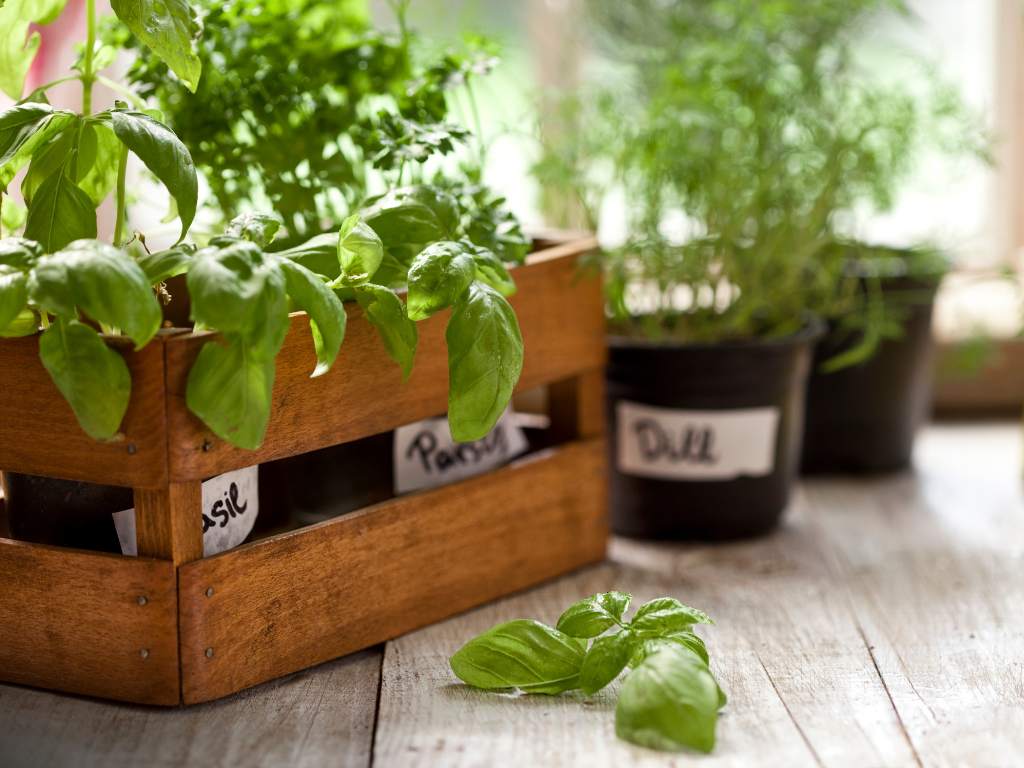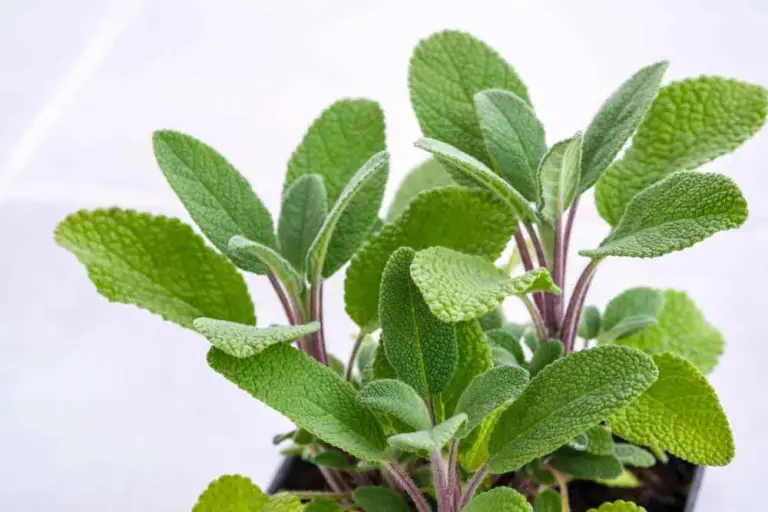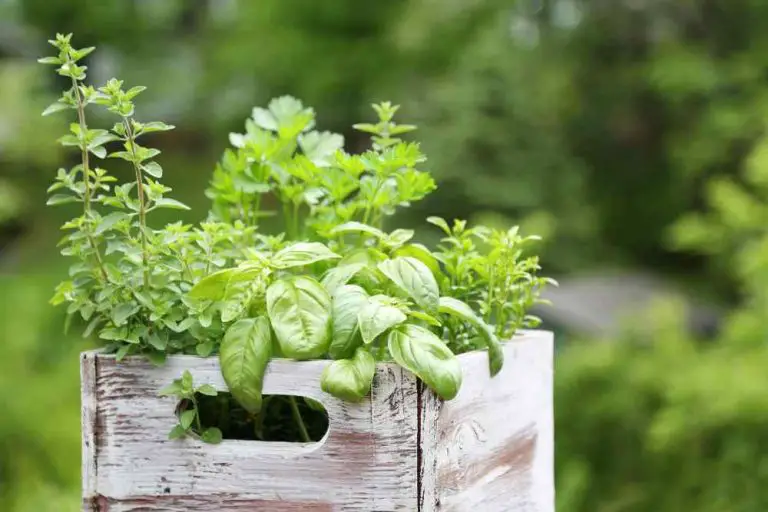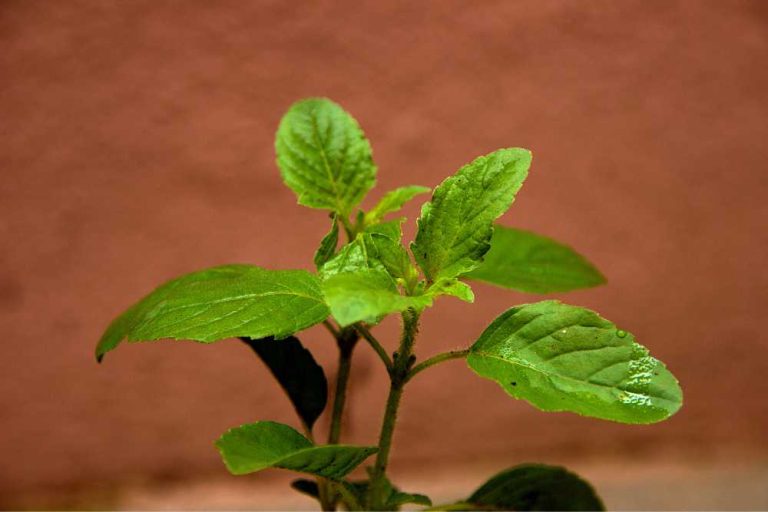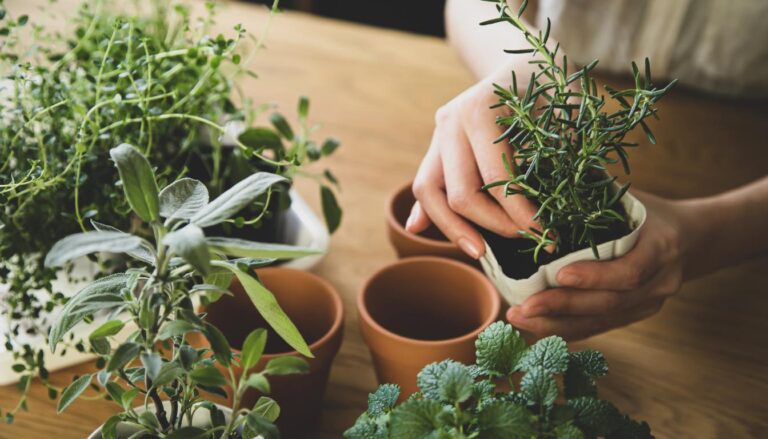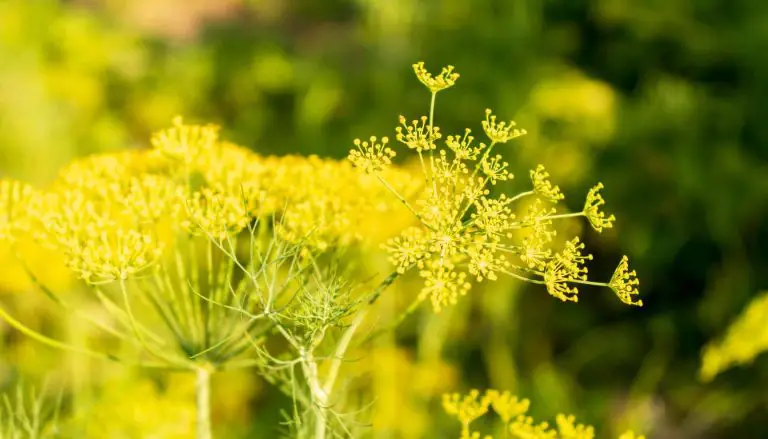Mastering Indoor Herb Garden Tips For a Thriving Harvest
If you’re like most people, you love the taste and aroma of fresh herbs in your cooking. But what if you could enjoy that same freshness all year round, right in your own home? With an indoor herb garden, you can do just that.
However, growing herbs indoors can be a bit tricky, especially if you’re new to the world of indoor gardening. That’s why we’ve put together this article to provide you with all the tips and techniques you need to successfully grow and maintain your own indoor herb garden.
- Indoor herb gardens require consistent care and attention in order to thrive
- Choosing the best herbs for indoor gardening is key to success
- Creating the perfect setup requires consideration of light, humidity, and potting soil
- Regular pruning and harvesting are essential for healthy growth
- Preventing and treating common pests and diseases is important for maintaining your indoor herb garden
Getting Started with Indoor Herb Gardening
If you’re looking for a way to spice up your cooking while enjoying the benefits of fresh herbs, growing herbs indoors is a great option. Not only is it convenient and cost-effective, but it also allows you to enjoy herbs year-round, regardless of the weather.
Choosing the Right Herbs
Before you begin growing herbs indoors, it’s important to choose the right herbs for your space and skill level. Some herbs are easier to grow indoors than others, so it’s best to start with herbs that are beginner-friendly. Here are some options:
- Basil
- Chives
- Sage
- Mint
- Parsley
These herbs are relatively low maintenance and can thrive in most indoor environments. They also add a lot of flavor to a variety of dishes.
Setting Up Your Indoor Herb Garden
Once you’ve chosen your herbs, it’s important to select the right containers and potting soil. Herbs generally do well in pots that are at least 6 inches in diameter, with good drainage. You can also consider using a planter box if you want to grow multiple herbs in one container.
When it comes to potting soil, it’s best to choose a high-quality, organic potting mix. This will help ensure that your herbs receive the nutrients they need to grow.
Providing Adequate Light and Water
One of the most important aspects of growing herbs indoors is providing them with adequate light and water. Most herbs require at least six hours of sunlight per day, so it’s important to place them in a sunny spot near a window. If you don’t have a lot of natural light in your home, you can also consider using grow lights to supplement.
Read – Grow Lights
When it comes to watering, it’s important to keep your herbs consistently moist but not waterlogged. Check the soil regularly and water when the top inch feels dry to the touch. It’s also a good idea to use a saucer or tray beneath your pots to catch excess water and prevent damage to your surfaces.
Caring for Your Indoor Herb Garden
Once your herb garden is set up, caring for it is relatively easy. Here are some tips to keep your herbs healthy and flavorful:
- Prune regularly to promote bushier growth and prevent overcrowding
- Fertilize every four to six weeks with a balanced, water-soluble fertilizer
- Rotate your pots every few weeks to ensure even growth
- Keep an eye out for pests and diseases, and address them promptly if they occur
Choosing the Best Herbs for Indoor Gardening
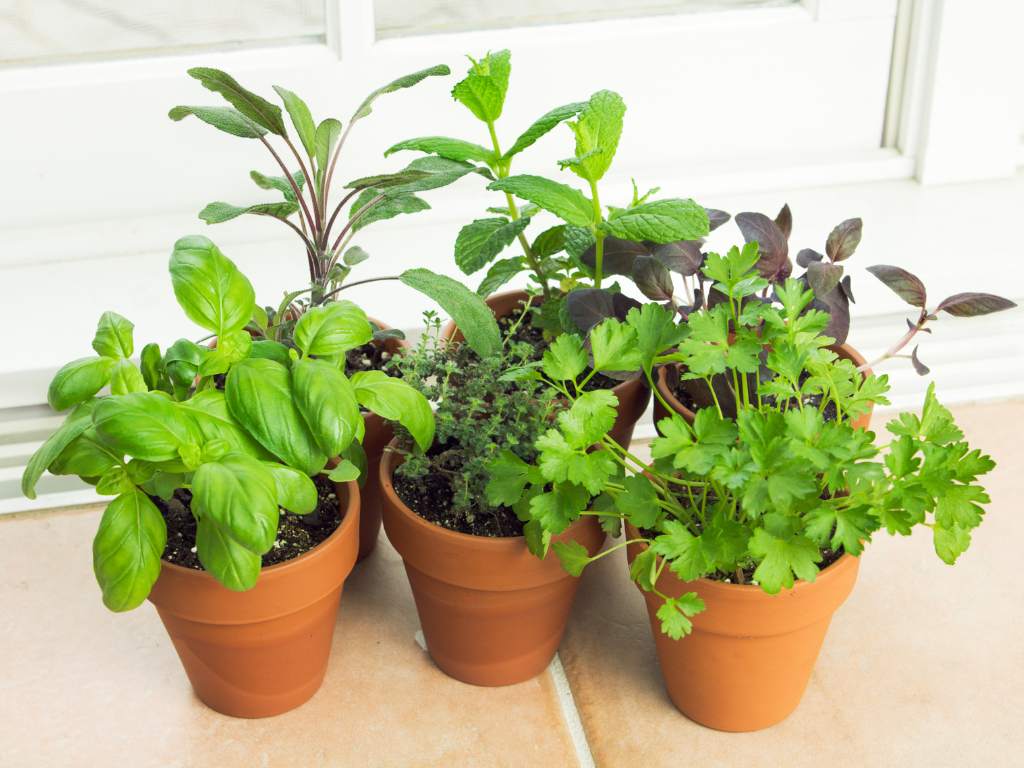
If you’re considering starting an indoor herb garden, it’s essential to choose the right herbs. Not all herbs are suited for indoor growing, so you’ll want to select plants that will thrive in your indoor environment. Here are some of the best herbs for indoor gardening:
Creating the Perfect Indoor Herb Garden Setup
Setting up your indoor herb garden is more than just picking the right spot. By creating the perfect environment, your herbs will thrive and provide you with flavorful bounty for months to come. Here are some tips for creating the ideal indoor herb garden setup:
1. Consider the Location
Choose a location that gets plenty of natural light, but avoid direct sunlight, as it can scorch your plants. Additionally, make sure the temperature is consistently between 60-70°F to ensure optimal growth. Keep in mind that some herbs, like mint and parsley, require more shade than others.
2. Container Selection
Choose containers with good drainage and enough space to accommodate your herbs as they grow. Avoid overcrowding, as this can lead to poor air circulation and increased risk of disease. Also consider the aesthetic of your containers, as they can add to the overall ambiance of your indoor herb garden.
3. Potting Soil
Use high-quality potting soil that is well-draining and rich in organic matter. Herbs prefer soil with a pH between 6.0 – 7.0, so avoid using regular garden soil. Be sure to replenish the nutrients in your soil with organic fertilizer every six months.
4. Humidity and Air Circulation
Proper humidity levels are critical for indoor herb gardens. Most herbs prefer humidity levels between 30-50%. You can increase humidity levels by misting your plants daily or placing a tray of water near your plants. While good air circulation is necessary to prevent mold and mildew, avoid placing your herbs near drafts.
Read – Humidity Tray For Indoor Plants
5. Lighting
Most herbs require at least 6 hours of full sunlight per day. Supplemental grow lights can be used to ensure your herbs receive adequate lighting, especially during the darker winter months. Keep the lights 6-12 inches away from your plants and use a timer to ensure consistent light cycles.
By following these tips, you can create the perfect environment for your indoor herb garden to thrive. With a little care and attention, you’ll be able to enjoy fresh herbs year-round.
Potting and Transplanting Your Herbs

Proper potting and transplanting techniques are key to ensuring your indoor herb garden thrives. Here are some tips to help with indoor herb garden care:
Choosing the Right Pot Size
When choosing pots for your herbs, make sure they are the appropriate size for the plants. Larger plants require larger pots to accommodate their root systems.
Generally, a pot that’s at least 6-8 inches in diameter will work well for most herbs. Avoid using pots that are too large, as excess soil can hold too much water and lead to root rot.
Proper Planting Techniques
When planting your herbs, make sure the soil is moist but not soaking wet. Gently loosen the plant’s root ball and place it in the center of the pot, making sure the top of the soil is level with the rim of the pot. Fill in any gaps with additional soil, pressing it down firmly to eliminate air pockets.
When and How to Transplant
As your herbs grow, they may outgrow their pots and need to be transplanted into larger ones. Signs that it’s time to transplant include roots growing out of the pot’s drainage holes, slow growth, and yellowing or wilting leaves. To transplant, gently remove the plant from its current pot and loosen the root ball. Place it in a new pot with fresh soil, and water well.
Tip: Avoid transplanting during stressful periods like hot weather or during flowering periods.
Watering and Feeding Your Indoor Herb Garden
Proper watering and feeding are essential for maintaining a healthy indoor herb garden. The amount and frequency of watering will depend on various factors such as the type of herbs, the size of the pot, and the environmental conditions. Here are some indoor herb garden care tips for watering your herbs:
Watering Your Herbs
When it comes to watering your herbs, it is important to avoid over-watering, which can lead to root rot and other issues. On the other hand, under-watering can cause your herbs to wilt and dry out. So, how do you strike the right balance?
- Check the soil moisture regularly by inserting your finger about an inch into the soil. If it feels dry, it’s time to water your herbs.
- Use room temperature water to avoid shocking the roots.
- Water your herbs thoroughly, until the excess water drains out of the bottom of the pot. Discard any excess water to prevent waterlogging the plant.
- Do not let your herbs sit in standing water for extended periods as it can cause root rot.
- If you have herbs that prefer drier soil, such as rosemary or thyme, allow the soil to dry out slightly between watering.
Read – DIY Automatic Watering System for Indoor Plants
Feeding Your Herbs
In addition to watering, your indoor herbs will appreciate occasional feeding to replenish nutrients in the soil. Here are some tips for feeding your herbs:
- Choose a fertilizer that is specifically formulated for herbs and follow the package instructions for how often to apply it.
- Do not over-fertilize, as this can lead to salt buildup in the soil, burning the roots.
- Consider using organic fertilizers that are gentle on your herbs and the environment.
Providing Adequate Light for Your Herbs
One of the most important factors in indoor herb garden care is providing adequate light for your herbs. Herbs require at least six hours of sunlight each day, but not all indoor spaces have enough natural light to support their growth. Luckily, there are several lighting options available to ensure your herbs receive the light they need.
Natural Sunlight
If possible, place your herbs near a south-facing window that receives plenty of direct sunlight. Avoid windowsills that receive direct heat or drafts, as these can damage your plants. If you’re short on space, consider hanging your herbs near a window using a plant hanger or wall-mounted planter.
Artificial Lighting
For indoor spaces with limited natural light, artificial lighting can be used to supplement your herbs’ needs. LED grow lights are a popular choice, as they are energy-efficient and emit specific wavelengths of light that plants need for photosynthesis. Place your lights 12-18 inches above your plants and keep them on for 12-16 hours per day. Be sure to monitor your plants closely, as too much light can be harmful.
Supplemental Grow Lights
Supplemental grow lights are another option for providing light to your indoor herb garden. These lights are often less expensive than LED grow lights and can be adjusted to the ideal height and intensity for your plants’ needs. However, they do consume more electricity and generate heat, which can damage your plants if placed too close. Be sure to monitor the temperature around your plants and adjust the position of your lights as needed.
| Pros | Cons |
|---|---|
| – Can be used in any indoor space – Can be adjusted to the ideal height and intensity for your plants – May be more affordable than LED grow lights in the short term | – Consumes more electricity than LED grow lights – Not as energy-efficient – Generates heat that can damage your plants if placed too close |
Maintaining Optimal Humidity Levels
Maintaining the right humidity levels is essential for ensuring the health of your indoor herb garden. Herbs need a certain level of humidity to thrive, but too much or too little can cause issues.
Why is humidity important for indoor herb gardens?
Humidity plays a vital role in the growth and overall health of your herbs. When the air is too dry, especially during the winter months, it can cause your herbs to wilt and dry out. On the other hand, when the air is too humid, it can lead to problems such as mold and mildew growth.
How to maintain the ideal humidity level for your herbs?
Monitoring the humidity levels in your home is the first step to maintaining a healthy environment for your herbs. A hygrometer is a handy tool that measures relative humidity. Ideally, the humidity level for most herbs should be between 40-60%.
- If the humidity in your home is too low, you can increase it by placing a humidifier in the room where your herbs grow. Alternatively, you can also try placing a tray filled with water near your plants. As the water evaporates, it will increase the humidity levels in the air.
- If the humidity in your home is too high, you can decrease it by increasing air circulation. Open windows or use a fan to help circulate the air and decrease humidity levels. Additionally, make sure to avoid overwatering your herbs, as excess water can increase humidity levels in the soil and air.
Avoiding common humidity-related issues
One common issue that can arise in indoor herb gardens is mold growth. Mold can grow on the soil surface if the humidity levels are too high. To prevent mold growth, make sure to avoid overwatering your herbs and increase air circulation in the environment.
On the other hand, if the humidity levels are too low, your herbs may start to droop and show signs of wilting. If this happens, increase the humidity levels as described above and avoid letting the soil dry out completely.
Pruning and Harvesting Your Herbs
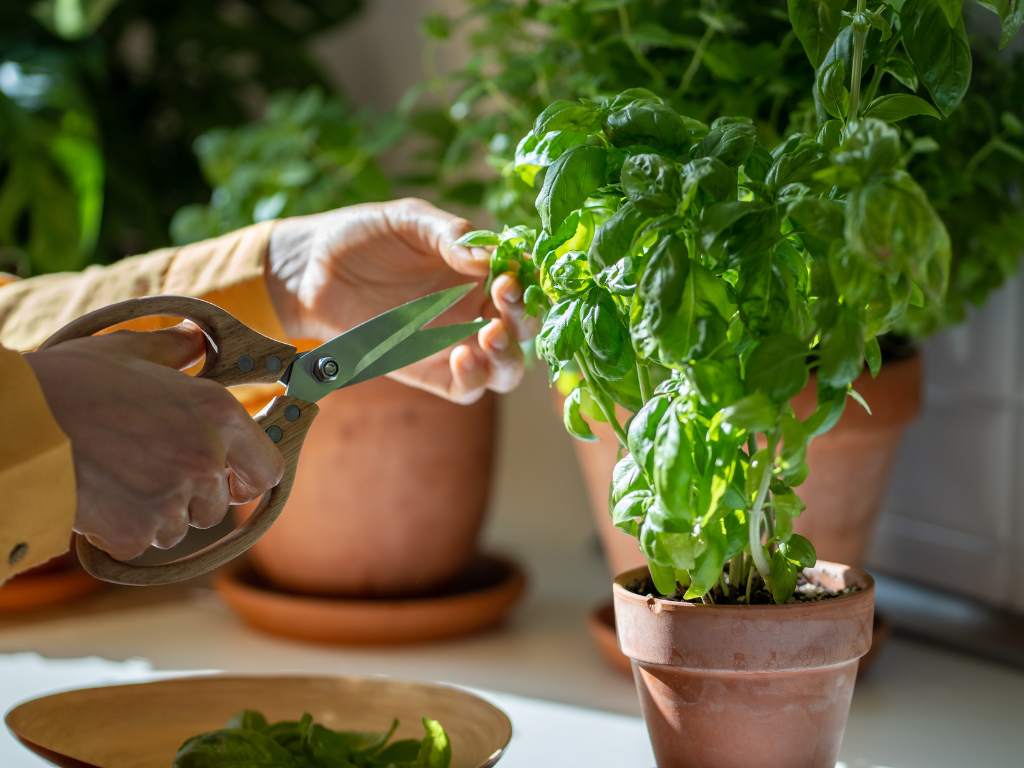
Regular pruning and harvesting are essential for the health and longevity of your indoor herb garden. Pruning helps control the growth of your herbs and promotes bushier, fuller plants. Harvesting your herbs at the right time ensures maximum flavor and prolongs the life of your plants.
Pruning Techniques
The best time to prune your herbs is when they are actively growing. Use clean, sharp scissors or pruning shears to remove the top one-third of the stem, making the cut just above a set of leaves.
This will encourage new growth and prevent your herbs from becoming too tall and spindly. If your herbs have become too tall, you can cut them back by as much as half, but be careful not to remove more than one-third of the plant at a time.
Harvesting Tips
The flavor of herbs is strongest just before they begin to flower, so it’s best to harvest them before this stage. Use sharp scissors or pruning shears to remove sprigs of herbs, cutting just above a set of leaves.
For leafy herbs like basil and cilantro, harvest the outer leaves first, working your way in. For woody herbs like thyme and rosemary, remove the top few inches of growth, leaving the woody stems intact.
Tip: Harvest your herbs in the morning when the oils that give them their flavor and aroma are at their strongest.
| Herb | Harvesting |
|---|---|
| Basil | Pick leaves as soon as they are large enough to use. Harvest frequently to keep the plant bushy. |
| Chives | Clip leaves at the base of the plant as needed. Cut back the entire plant to 2 inches above the soil in the fall. |
| Oregano | Harvest leaves once the plant reaches 4-6 inches in height. Cut back by one-third in midsummer to encourage bushy growth. |
| Parsley | Pick outer leaves as needed, leaving the center intact. Plants can be harvested down to a few inches in height. |
| Thyme | Clip stems as needed, being careful not to remove more than one-third of the plant at a time. Cut back by one-third in early summer. |
By pruning and harvesting your herbs regularly, you’ll enjoy healthier, more productive plants and a continuous supply of fresh herbs for your culinary creations.
Dealing with Common Pests and Diseases
While indoor herb gardens are less prone to pests and diseases than outdoor gardens, they can still suffer from a variety of common issues. Here are some tips for identifying and dealing with the most common problems:
Prevention is key to keeping your indoor herb garden healthy. Avoid overcrowding your herbs, provide good air circulation, and keep the plants well-maintained. Regularly inspect your herbs for any signs of problems and address them promptly to prevent further damage.
Enhancing Your Indoor Herb Garden with Creative Ideas
Looking for ways to take your indoor herb garden to the next level? Here are some creative ideas to inspire you:
1. Vertical Herb Garden
If you’re short on space, a vertical herb garden can be a great solution. Install a vertical planter on a wall or use a repurposed ladder to display your herbs in a stylish and functional way.
2. Herb Wreath
Create a beautiful wreath using fresh herbs from your garden. Select a variety of herbs with different textures and colors, and use floral wire to attach them to a wreath form. Hang in your kitchen and enjoy the scent of fresh herbs every time you enter the room.
3. Herb Terrarium
Get creative with your containers and create a mini herb terrarium. Use a glass jar or container and plant your herbs in layers with potting soil. Add decorative rocks or shells to the top layer for a unique and eye-catching display.
4. Herb Infused Oils
Use your harvested herbs to create delicious herb-infused oils. Simply add fresh herbs to a jar of oil and let steep for a few weeks. Strain out the herbs and use the oil for cooking or as a flavorful addition to salads and dressings.
5. Herb Butter
Make your own herb butter by mixing softened butter with finely chopped fresh herbs. Roll into a log and chill until firm. Slice and use to add a burst of flavor to grilled meats, steamed veggies, or baked potatoes.
6. Herb Ice Cubes
Add fresh herbs to ice cube trays, fill with water, and freeze. Use the herb-infused ice cubes to add flavor to water, cocktails, or tea.
7. Herb Bouquets
Create a beautiful bouquet of fresh herbs to display in your kitchen. Combine a variety of herbs with complementary colors and textures, tie with twine, and place in a vase or pitcher.
8. Herb Salt
Mix finely chopped fresh herbs with coarse sea salt to create a flavorful herb salt. Sprinkle on grilled meats, roasted veggies, or popcorn for a delicious seasoning.
9. Herb Tea
Brew your own herb tea using fresh herbs from your garden. Mint, chamomile, and lavender make delicious and soothing teas.
10. Herb Pesto
Use your harvested herbs to make a delicious and versatile herb pesto. Combine fresh herbs, garlic, nuts, and olive oil in a food processor and pulse until smooth. Use as a pasta sauce, sandwich spread, or dip for veggies.
FAQ
What are some indoor herb garden tips?
Indoor herb garden tips include providing adequate lighting, proper watering and feeding, choosing the right herbs for indoor gardening, and maintaining optimal humidity levels.
How do I get started with indoor herb gardening?
To get started with indoor herb gardening, you’ll need to select the right herbs, choose suitable containers and potting soil, and create an optimal environment for your herbs to thrive.
What are the best herbs for indoor gardening?
Some of the best herbs for indoor gardening are basil, rosemary, parsley, and chives. These herbs are well-suited for indoor environments and have specific care requirements.
How do I create the perfect indoor herb garden setup?
Creating the perfect indoor herb garden setup involves choosing the right location, providing the right lighting and humidity levels, and selecting suitable containers and potting soil.
What are the proper techniques for potting and transplanting herbs?
When potting and transplanting herbs, it’s important to choose the right size pots, properly plant the herbs, and transplant them as they grow. These techniques help ensure the health and growth of your herbs.
How often should I water and feed my indoor herb garden?
The watering and feeding frequency for your indoor herb garden depends on various factors such as the herb type, pot size, and environmental conditions. Generally, herbs should be watered when the top inch of soil is dry, and fed every 2-4 weeks with a balanced fertilizer.
How can I provide adequate light for my herbs?
Adequate lighting can be provided through natural sunlight, artificial lighting, or supplemental grow lights. The amount and quality of light required depends on the specific herb, but most herbs need at least 6-8 hours of sunlight or equivalent artificial light per day.
How do I maintain optimal humidity levels for my indoor herb garden?
Maintaining optimal humidity levels can be achieved by placing a tray of water near the herbs, misting the leaves regularly, and ensuring good air circulation. This helps prevent issues such as mold or drying out of the herbs.
How should I prune and harvest my herbs?
Regular pruning promotes bushier growth, and proper harvesting techniques maximize flavor while minimizing damage. Pruning involves removing excess growth, and harvesting should be done by snipping or cutting just above a leaf node.
How do I deal with common pests and diseases in my indoor herb garden?
Common pests and diseases in indoor herb gardens include aphids, spider mites, and fungal infections. Prevention is key, but if an issue arises, organic pest control methods such as neem oil or insecticidal soap can be used.
How can I enhance my indoor herb garden with creative ideas?
There are numerous creative ideas to enhance your indoor herb garden, such as designing a vertical herb garden, incorporating herbs into decorative displays, or creating herb-infused products like herbal teas or homemade herb-infused oils.
- 15 Ingenious Kitchen Garden Ideas to Cultivate Freshness Right at Home - April 7, 2024
- 10 Top Picks Best Plants for Open Terrarium - April 2, 2024
- 21 Easy and Cheap Walkway Ideas for a Charming Garden - March 31, 2024

